Last month I attended the US Ignite launch event at the White House (see full video here), where a number of Obama administration officials made a series of announcements about programs around broadband policy. There are many entities, technologies, and programs that fit together to form a path toward United States leadership in superfast broadband, but it takes some digging and threading to hold it all in one hand. Here are some notes toward that, with a particular focus on how our work in Chicago can fit in to this important set of initiatives.
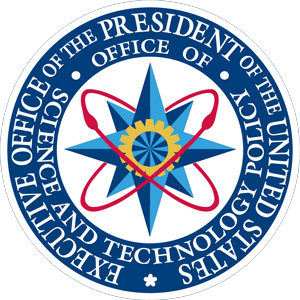 Leading by example and providing physical space for advanced broadband
Leading by example and providing physical space for advanced broadband
Dr. John P. Holdren, Director of the Office of Science and Technology Policy announced that the President has issued an Executive Order Accelerating Broadband Infrastructure Deployment. This makes public land available for the placement of broadband infrastructure. Marc Ganzi, Chairman of the Personal Communications Industry Associate later said that “getting access to government land has been close to impossible”. This policy sets forth a central process and clearing house for doing that. This applies to any and all Federally-owned properties in Chicago.
 Providing the raw technology for next-generation networks
Providing the raw technology for next-generation networks
Next up was Subra Suresh, Director of the National Science Foundation. First off, I was struck by the astoundingly effective investments made by this organization, including elemental projects like the National Center for Supercomputing Applications and Digital Library Initiative, which led to the Web browser and Google, respectively. Suresh spoke of a similar building block-style NSF program called GENI: Global Environment for Network Innovations. This is the technical groundwork for US Ignite— a “single physical network can be virtualized into multiple ‘slices’ or logical networks, each isolated from one another and customized to specific applications or uses”. Basically: a network that can be programmed to act in specific, custom ways based on the needs of the application that is running on it. In order for a company to take advantage of gigabit-level connectivity, they have to understand and think of and use networks in a different way than we currently do. Chicago is a leader in data centers— including the new 840 South Canal Street— and there is opportunity for us to provide conceptual leadership on these next-generation networks.
 And concrete cash to encourage unexpected uses
And concrete cash to encourage unexpected uses
Suresh also announced four Early-concept Grants for Exploratory Research at four universities that will research concrete uses for GENI. Lastly, Suresh announced NSF support for the Mozilla Ignite Open Innovation Challenge, with $15,000 in prizes to “design and build apps for the faster, smarter internet of the future”. This is a total of half million dollars over the next few months— money to be had for Chicago developers and network scientists.
 A real-world example helps bring it home
A real-world example helps bring it home
Then John Underkoffler, Chief Scientist at Oblong Industries, shared a relatively well-known real-world example of how these superfast networks are being used. Underkoffler invented the g-speak™ platform— the gestural interace control system shown in the film Minority Report. This product started off at the MIT Media Lab and is now located in Los Angeles. They have a telepresence product called Mezzanine that “melds technologies for collaborative whiteboarding, presentation design and delivery, and application sharing”.
Thinking about gigabit as a central component of United States competitive strategy
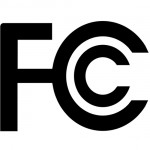 Julius Genachowski, Chairman of the FCC, then took the podium and provided some good context on why gigabit connections are important. He gave as an example mobile apps. It’s not that long ago that we looked to Japan for leadership on mobile apps— they were doing the most interesting things with phones. Now the United States is the unquestioned leader, witha proliferation of applications on all sorts of platforms. He also referenced getting to scale on 4G faster than any other country— the US is clearly the world’s testbed. He spoke of three goals at the FCC: increase spectrum, increase broadband adoption (this is a main focus here at Smart Chicago), and increase speed (a focus of US Ignite). He gave a number of examples of how the FCC helps out, including rules regarding pole attachments that make it easier for companies to string broadband fiber and the Connect 2 Compete program for broadband access at the community level. Here’s the complete text of Genachowski’s remarks.
Julius Genachowski, Chairman of the FCC, then took the podium and provided some good context on why gigabit connections are important. He gave as an example mobile apps. It’s not that long ago that we looked to Japan for leadership on mobile apps— they were doing the most interesting things with phones. Now the United States is the unquestioned leader, witha proliferation of applications on all sorts of platforms. He also referenced getting to scale on 4G faster than any other country— the US is clearly the world’s testbed. He spoke of three goals at the FCC: increase spectrum, increase broadband adoption (this is a main focus here at Smart Chicago), and increase speed (a focus of US Ignite). He gave a number of examples of how the FCC helps out, including rules regarding pole attachments that make it easier for companies to string broadband fiber and the Connect 2 Compete program for broadband access at the community level. Here’s the complete text of Genachowski’s remarks.
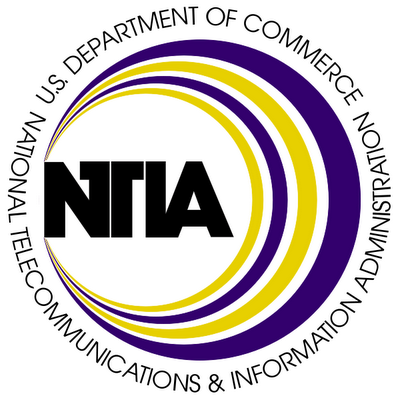 Existing BTOP investments and other work by NTIA have supported US Ignite partners
Existing BTOP investments and other work by NTIA have supported US Ignite partners
Larry Strickling of the National Telecommunications and Information Administration focused on expanding middle mile capacity in underserved areas and at anchor institutions. He says that NTIA is interested in working where the market has not served people. He called out a number of US Ignite partners who are also NTIA grantees: REACH Michigan Middle Mile Collaborative (“proposes to build a 955-mile advanced fiber-optic network through underserved counties in Michigan’s Lower Peninsula to serve institutions, businesses and households”) , Urbana-Champaign Big Broadband (“plans to construct 187 miles of fiber-optic broadband network to provide high-speed connectivity to area community anchor institutions and support fiber-to-the home services in four low-income neighborhoods”), and UTOPIA (“The Utah Telecommunications Open Infrastructure Agency (UTOPIA), a collaboration between 16 Utah municipalities in the Great Salt Lake region of northern Utah, proposes to enhance its existing fiber network to bring improved broadband services to Perry, Layton, Centerville, West Valley, Murray, Midvale, Orem, and Payson, with the capacity to expand to the entire region.”) Again, the point here is that existing investments by the federal government are being drawn together into a strategic plan to drive superfast broadband. Here at Smart Chicago, we’ve helped administer many of the local BTOP projects, and we are working closely with partners to see how we can learn from, enhance, and continue their great work.
 This is an age of conception— we are limited only by our imaginations
This is an age of conception— we are limited only by our imaginations
Next up was Tom Kalil, the Deputy Director for Policy at the White House Office of Science and Technology Policy. He pointed to the Department of Health and Human Services Beacon program that will help the Mayo Clinic partner with US Ignite to deliver remote medical services. He also referenced a Department of Defense program to develop new algorithms to detect Improvised Explosive Devices. The Institute for Museum and Library Services is creating new apps for library patrons. Again, these are concrete examples that are being done in other cities that we should think about here in Chicago. The more we can be a leader in conception, the more investments and energy we can aggregate here.
 US Ignite is looking to foster 60 applications— let’s make sure we’re in this number
US Ignite is looking to foster 60 applications— let’s make sure we’re in this number
Sue Spradley, the Executive Director of US Ignite, next gave some remarks about their role as an organization, which is to “connect and amplify efforts across the country”. I have worked with Sue and others from US Ignite and USTOP over the last year as they’ve planned for this launch. To be frank, at times it can feel overly loose, but in attending this event, things are coming into focus. This is the nature of the gigabit beast— its concrete value is not well-defined at this time. That is an opportunity for us here in Chicago— to fill those gaps. The US Ignite goal is to foster 60 applications that make a difference— let’s build our share of that!
 Basic research is critical
Basic research is critical
John Donovan of AT&T spoke about the importance of this initiative from the business perspective. Nice quote: “We put a man on the man before we put wheels on a suitcase”. He spoke of the work AT&T on their with GENI-based research. He spoke about the value of basic research, noting that AT&T Labs started in 1901 and they still have 12,000 researchers working today. The opportunity is enormous: demand for mobile data has grown 20,000 percent in the last 4 years. Lastly, he made the call for more spectrum to be made available for providers. This is a major component of the National Broadband Plan. “Every available option, with a minimum of red tape and delay”, was his call.
The infrastructure is still being created
 Marc Ganzi, Chairman of the Personal Communications Industry Association (PCIA) offered a perspective on the nitty-gritty of the buildout for this network. “We’ve got to get the plumbing right— it’s not about bars on a phone, it’s about economic development and next generation applications”. He referenced the Jobs Act and the importance of the spectrum license auctions. “This is not a sexy job. Building networks today is difficult.” Small cell architecture. DAS networks and pole attachments, large towers, hidden towers. This is the critical stuff. “Getting access to government land has been close to impossible”, but now there is a central process and clearing house. To me, this highlighted the opportunity before us— the network is just now being developed.
Marc Ganzi, Chairman of the Personal Communications Industry Association (PCIA) offered a perspective on the nitty-gritty of the buildout for this network. “We’ve got to get the plumbing right— it’s not about bars on a phone, it’s about economic development and next generation applications”. He referenced the Jobs Act and the importance of the spectrum license auctions. “This is not a sexy job. Building networks today is difficult.” Small cell architecture. DAS networks and pole attachments, large towers, hidden towers. This is the critical stuff. “Getting access to government land has been close to impossible”, but now there is a central process and clearing house. To me, this highlighted the opportunity before us— the network is just now being developed.
Smart Chicago is deeply engaged with the national entities working in gigabit networks and how they can serve the businesses and communities. We look forward to working with local stakeholders as they help bring these benefits here.


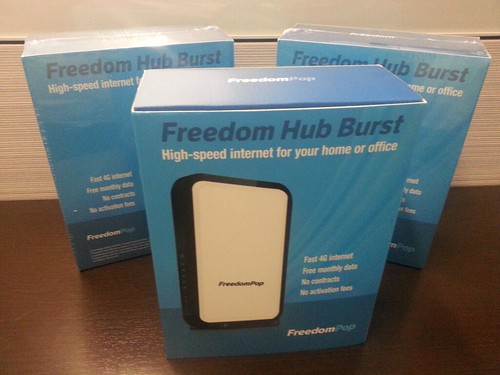
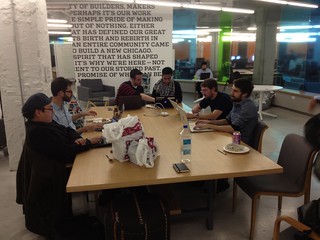
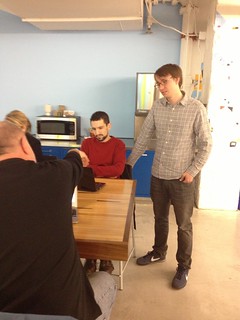



 Leading by example and providing physical space for advanced broadband
Leading by example and providing physical space for advanced broadband Providing the raw technology for next-generation networks
Providing the raw technology for next-generation networks And concrete cash to encourage unexpected uses
And concrete cash to encourage unexpected uses A real-world example helps bring it home
A real-world example helps bring it home Julius Genachowski, Chairman of the FCC, then took the podium and provided some good context on why gigabit connections are important. He gave as an example mobile apps. It’s not that long ago that we looked to Japan for leadership on mobile apps— they were doing the most interesting things with phones. Now the United States is the unquestioned leader, witha proliferation of applications on all sorts of platforms. He also referenced getting to scale on 4G faster than any other country— the US is clearly the world’s testbed. He spoke of three goals at the FCC: increase spectrum, increase broadband adoption (this is a
Julius Genachowski, Chairman of the FCC, then took the podium and provided some good context on why gigabit connections are important. He gave as an example mobile apps. It’s not that long ago that we looked to Japan for leadership on mobile apps— they were doing the most interesting things with phones. Now the United States is the unquestioned leader, witha proliferation of applications on all sorts of platforms. He also referenced getting to scale on 4G faster than any other country— the US is clearly the world’s testbed. He spoke of three goals at the FCC: increase spectrum, increase broadband adoption (this is a  Existing BTOP investments and other work by NTIA have supported US Ignite partners
Existing BTOP investments and other work by NTIA have supported US Ignite partners This is an age of conception— we are limited only by our imaginations
This is an age of conception— we are limited only by our imaginations US Ignite is looking to foster 60 applications— let’s make sure we’re in this number
US Ignite is looking to foster 60 applications— let’s make sure we’re in this number Basic research is critical
Basic research is critical Marc Ganzi, Chairman of the Personal Communications Industry Association (PCIA) offered a perspective on the nitty-gritty of the buildout for this network. “We’ve got to get the plumbing right— it’s not about bars on a phone, it’s about economic development and next generation applications”. He referenced the Jobs Act and the importance of the spectrum license auctions. “This is not a sexy job. Building networks today is difficult.” Small cell architecture. DAS networks and pole attachments, large towers, hidden towers. This is the critical stuff. “Getting access to government land has been close to impossible”, but now there is a central process and clearing house. To me, this highlighted the opportunity before us— the network is just now being developed.
Marc Ganzi, Chairman of the Personal Communications Industry Association (PCIA) offered a perspective on the nitty-gritty of the buildout for this network. “We’ve got to get the plumbing right— it’s not about bars on a phone, it’s about economic development and next generation applications”. He referenced the Jobs Act and the importance of the spectrum license auctions. “This is not a sexy job. Building networks today is difficult.” Small cell architecture. DAS networks and pole attachments, large towers, hidden towers. This is the critical stuff. “Getting access to government land has been close to impossible”, but now there is a central process and clearing house. To me, this highlighted the opportunity before us— the network is just now being developed.